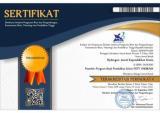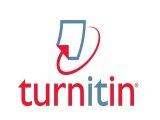Implementation of Expository Learning Integrated with Active Students Learning Strategy to Improve Learning Outcomes in Stoichiometry
DOI:
https://doi.org/10.33394/hjkk.v11i5.8700Keywords:
classroom action research, expository learning, learning outcomes, stoichiometryAbstract
References
Anitah, S. (2007). Strategi Pembelajaran. Univeristas Terbuka.
Aqib, Z., Jaiyaroh, S., Diniati, E., & Khotimah, K. (2011). Penelitian Tindakan Kelas untuk Guru SMP, SMA, SMK. Yrama Widya.
Arikunto, S. (2022). Dasar-Dasar Evaluasi Pendidikan (2nd ed.). Bumi Aksara.
Effendy. (2008). A-Level Chemistry for Senior High School Students Based on 2007 Cambridge Curriculum Volume 1A. Bayumedia Publishing.
Ganyaupfu, E. M. (2013). Teaching Methods and Students’ Academic Performance. International Journal of Humanities and Social Science Invention, 2(9), 29–35.
Heryadi, D., & Sundari, R. S. (2020). Expository Learning Model. International Journal of Education and Research, 8(1), 207–216.
Jannatu, N., Imah, N. ’, Dan, S., & Wardani, S. (2015). Penerapan Pembelajaran Berbasis Proyek Berbantuan E-Learning untuk Meningkatkan Hasil Belajar Siswa. Jurnal Inovasi Pendidikan Kimia, 9(2), 1566–1574.
Kean, A., & Middlecamp, C. (1985). Panduan Belajar Kimia Dasar. Gramedia.
Kind, V. (2004). Beyond Appearances: Students’ Misconceptions About Basic Chemical Ideas. Durham University.
Mayer, R. E. (2004). Should There Be a Three-Strikes Rule Against Pure The Case for Guided Methods of Instruction. American Psychologist, 59(1), 14–19. https://doi.org/10.1037/0003-066X.59.1.14
Nugrahaeni, A., Redhana, I. W., & Kartawan, I. M. A. (2017). Penerapan Model Pembelajaran Discovery Learning untuk Meningkatkan Kemampuan Berpikir Kritis dan Hasil Belajar Kimia. Jurnal Pendidikan Kimia Indonesia, 1(1), 23. https://doi.org/10.23887/jpk.v1i1.12808
Putri, N. S., & Mahdian, L. (2019). Penerapan Model Problem Solving terhadap Motivasi dan Hasil Belajar Peserta Didik pada Materi Stoikiometri. Journal of Chemistry and Education, 3(2), 55–63.
Sappaile, N. (2019). Hubungan Pemahaman Konsep Perbandingan dengan Hasil Belajar Kimia Materi Stoikiometri. Jurnal Ilmu Pendidikan (JIP) STKIP Kusuma Negara, 10(2), 58–71.
Sastrawijaya, T. (1998). Proses Belajar Mengajar Kimia. Kanisius.
Smith, J. P., DiSessa, A. A., & Roschelle, J. (1993). Misconceptions Reconceived : A Constructivist Analysis of Knowledge in Transition. Journal of the Learning Sciences, 3(2), 115–163. https://doi.org/10.1207/s15327809jls0302
Sudijono, A. (2008). Pengantar Evaluasi Pendidikan. Raja Grafindo Persada.
Sukmawati, D., & Purbaningrum, E. (2015). Pengaruh Model Pembelajaran Ekspositori terhadap Kemampuan Berbicara Anak. Paud Teratai, 4(2), 1–6.
Sunaringtyas, K., Saputro, S., & Masykuri, M. (2015). Pengembangan Modul Kimia Berbasis Masalah pada Materi Konsep Mol Kelas X SMA/MA sesuai Kurikulum 2013. Inkuiri: Jurnal Pendidikan Ipa, 4(2).
Symington, D., & Kirkwood, V. (1996). Lecturer Perceptions of Student Difficulties in A First-Year Chemistry Course. Journal of Chemical Education, 73(4), 339. https://doi.org/https://doi.org/10.1021/ed073p339
Utami, B., Saputro, A. N. C., Mahardiani, L., Yamtinah, S., & Mulyani, B. (2009). Kimia Untuk SMA dan MA Kelas X Program Ilmu Alam. HaKa MJ.
Wahyuni, N. D., Bahar, A., & Handayani, D. (2017). Perbandingan Hasil Belajar Kimia Model Pembelajaran Problem Based Learning dan Think Talk Write. ALOTROP : Jurnal Pendidikan Dan Ilmu Kimia, 1(2), 144–147. https://ejournal.unib.ac.id/alotropjurnal/article/view/3546.
Downloads
Published
How to Cite
Issue
Section
Citation Check
License
License and Publishing Agreement
In submitting the manuscript to the journal, the authors certify that:
- They are authorized by their co-authors to enter into these arrangements.
- The work described has not been formally published before, except in the form of an abstract or as part of a published lecture, review, thesis, or overlay journal.
- That it is not under consideration for publication elsewhere,
- That its publication has been approved by all the author(s) and by the responsible authorities – tacitly or explicitly – of the institutes where the work has been carried out.
- They secure the right to reproduce any material that has already been published or copyrighted elsewhere.
- They agree to the following license and publishing agreement.
Copyright
Authors who publish with Hydrogen: Jurnal Kependidikan Kimia agree to the following terms:
- Authors retain copyright and grant the journal right of first publication with the work simultaneously licensed under a Creative Commons Attribution License (CC BY-SA 4.0) that allows others to share the work with an acknowledgment of the work's authorship and initial publication in this journal.Â
- Authors are able to enter into separate, additional contractual arrangements for the non-exclusive distribution of the journal's published version of the work (e.g., post it to an institutional repository or publish it in a book), with an acknowledgment of its initial publication in this journal.
- Authors are permitted and encouraged to post their work online (e.g., in institutional repositories or on their website) prior to and during the submission process, as it can lead to productive exchanges, as well as earlier and greater citation of published work.
Licensing for Data Publication
Hydrogen: Jurnal Kependidikan Kimia uses a variety of waivers and licenses, that are specifically designed for and appropriate for the treatment of data: Open Data Commons Attribution License, http://www.opendatacommons.org/licenses/by/1.0/ (default) Other data publishing licenses may be allowed as exceptions (subject to approval by the editor on a case-by-case basis) and should be justified with a written statement from the author, which will be published with the article.










